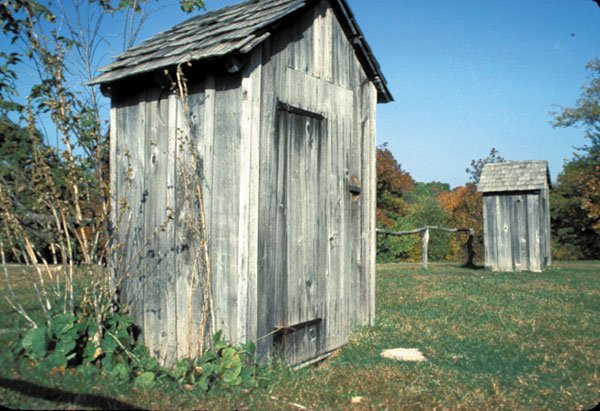Indiana Jones, Hollywood’s most famous archeologist, is back and
ready for action with his latest escapade involving some mysterious
crystal skull and the usual assortment of bad guys looking for some
mythic power source.
Indiana Jones, Hollywood’s most famous archeologist, is back and ready for action with his latest escapade involving some mysterious crystal skull and the usual assortment of bad guys looking for some mythic power source. The flick hit South Valley cineplexes Thursday, making me wonder how “Indie” might compare with Mark Huddleston, Gilroy’s most famous archeologist.
Not that Huddleston has ever had to fight Nazis or outrun boulders or face a tomb full of snakes in his pursuit of ancient artifacts. You’ll more likely find Huddleston digging in the sites of former outhouses. If Steven Spielberg ever made a movie about the South Valley amateur archeologist, it might be titled “Raiders of the Lost Bottles.”
“I dig up antique bottles and they come from outhouses,” he told me during a recent phone chat. “Glass became prevalent in quantities around the 1840s and 1850s, and people were overburdened by the surplus.” There were so many bottles that people often threw them into the pit of the privy, he explained.
OK, it’s not quite the stuff of an Indiana Jones blockbuster, but Huddleston is more of a real archeologist than the guy actor Harrison Ford famously depicts.
In the movies, Indiana Jones might tell his college students that archeology is all about thorough research and recording the details of scientific investigation. But when it comes down to it, he basically is a tomb raider who has no qualms about wrecking havoc on an ancient location to get whatever treasure he needs to find.
I find it ironic that the Nazis in these adventure movies are more professional in their archeological technique than Jones. They take their time in the digging process, systematically detailing their finds for further research. Jones just plows through a dig site like a bull in a China shop, hardly wincing at the loss of potential knowledge about some ancient culture that results from his desecrating activities.
Huddleston told me that the point of archeology is not so much the artifact found as the knowledge we can gain about that world from which the object came. From his digs, he’s gotten a sense of the human beings that lived in the South Valley 100 to 150 years ago. Every outhouse artifact unburied from the depth of some long-ago “call of nature” holds a story about the person who used it, he insisted.
“They consumed just as much beverage as we do now, only they just didn’t have the recycle habits we do,” he said. “The outhouses are like a time capsule of what the home or the business activity was like in that day.”
Among the more interesting items Huddleston has dug up is an old-fashioned Derringer pocket pistol. Did someone hide the evidence after some unseemly South Valley murder, I wondered? Not likely, Huddleston speculated. “The guy was probably fiddling around with it in the outhouse, he dropped it and never retrieved it.”
Other items that Huddleston has found include a complete Model T Ford in Santa Clara and the remains of a Native American placed 400 years ago in a burial ground where a San Jose motel now stands. “There’s always a story,” he said.
Comparing his own archeological endeavors with Indiana Jones, Huddleston told me that the most honest moment in the movies series comes at the end of “Raiders of the Lost Ark.” In that final scene, the Ark of the Covenant is packed up in a crate and carted away to be stored among thousands of other crates in an immense warehouse.
That’s scene says a lot about archeology. So many items are recovered but relatively few of them ever see the light of a museum display case. “We don’t want the stuff, really,” Huddleston explained. “We just want the information.” He often shares this info at guest lectures for the Gilroy and Morgan Hill historical societies.
Unlike Indiana Jones, Huddleston does not wear a fedora hat, leather jacket or carry a bull whip to get him out of tight spots. His archeological life is one where he’s more likely to be pushing dirt with a shovel and sorting through broken bits of ceramic and glass instead of dodging bullets or hanging for his life from a cliff. But his hobby is still an adventure, letting him learn what life was like in the past for South Valley’s pioneering residents.












